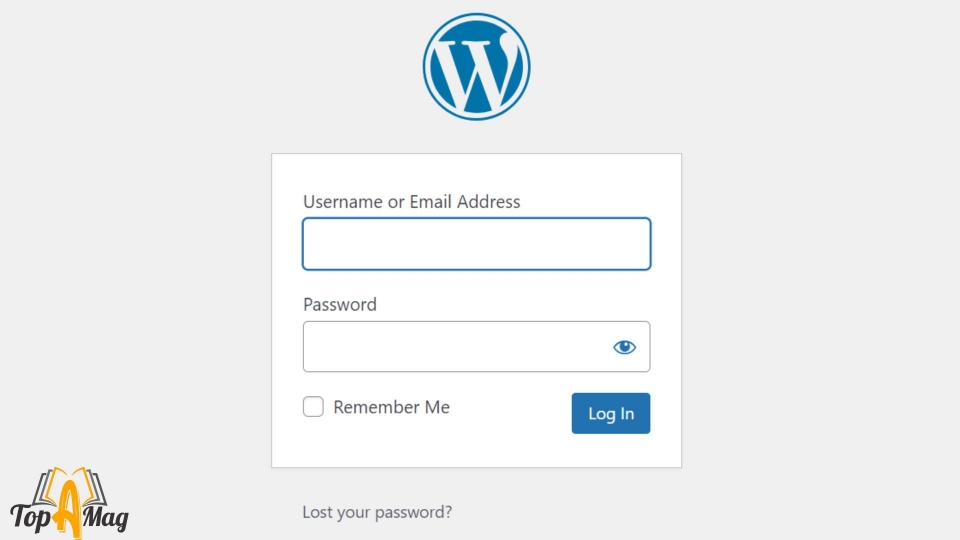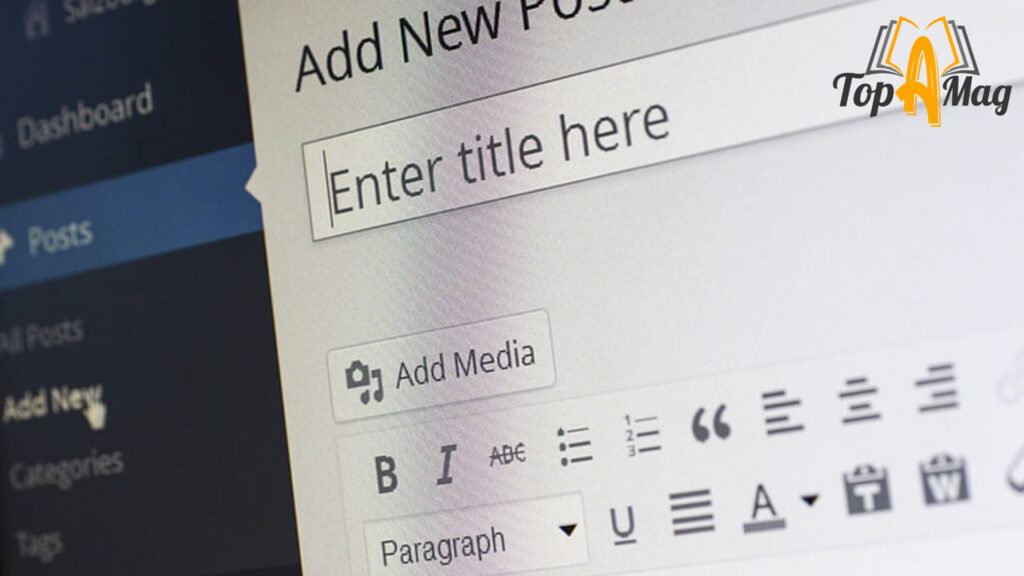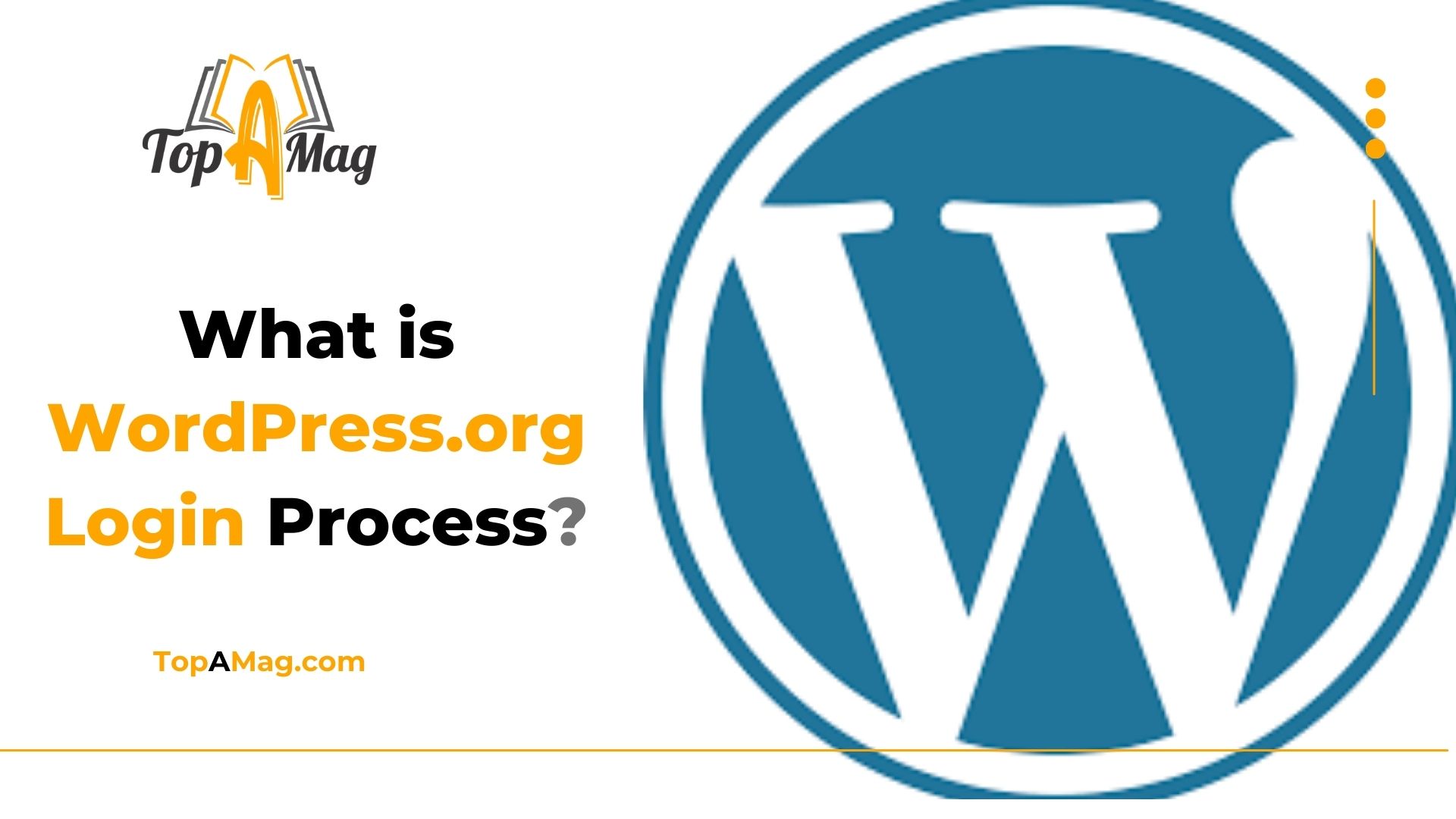Understanding the WordPress.org login process is crucial for anyone looking to manage a website on this popular content management system. WordPress.org, distinct from its commercial sibling WordPress.com, offers users unparalleled freedom in website creation. However, with this freedom comes the necessity to grasp the basics, starting with the login process. Let’s dive into this Guide by The Top A Mag Team on how to log in, secure your credentials, and troubleshoot common issues of the WordPress.org Login Process.
Key Takeaways:
- WordPress.org gives entire manipulation over internet site customization, starting with a stable and easy login procedure.
- Ensuring a strong, unique password and enabling two-factor authentication is critical for securing your WordPress.org login.
- Regularly updating your WordPress setup is vital for retaining protection and functionality.
- Customizing the login page adds a personal touch and can improve security.
- Monitoring login activity and securing the wp-admin directory are essential steps in protecting your website.
1. Understanding WordPress.org
Before diving into the login system, it is crucial to apprehend what WordPress.Org is. WordPress.Org is a self-hosted platform, which means you need to buy a site call and web hosting service to run your internet site. Unlike WordPress.com, which offers a more straightforward setup but with limitations, WordPress.org provides complete control over your site’s customization and functionality. This platform is ideal for those who want to build professional websites without restrictions.
2. Setting Up Your WordPress.org Account
The adventure begins with setting up your WordPress.Org account. This step is straightforward yet crucial as it sets the foundation for your entire website. After buying your domain and hosting, you’ll need to install WordPress via your hosting issuer. Most hosting services provide a one-click setup method, making it smooth for novices to get commenced.
Once installed, you’ll receive an email with your WordPress.org login credentials. This information includes your username, password, and the URL for accessing the login page. The login web page generally follows this layout: yourdomain.com/wp-admin.

3. Navigating to the WordPress.org Login Page
Accessing the WordPress.org login page is your first step in managing your website. As mentioned, you’ll typically use the yourdomain.com/wp-admin URL. This URL takes you to a login screen where you can enter your credentials.
At times, users forget their login URL. If this happens, don’t worry! You can always find it by visiting your website and adding /wp-admin or /login to the end of your URL. It’s a small yet vital step in ensuring you can access your WordPress.org dashboard whenever necessary.
4. Entering Your Credentials
Once you’ve reached the WordPress.org login page, it’s time to enter your credentials. This process might seem simple, but ensuring your credentials are correct is essential. Enter your username and password carefully, and double-check for any typos. Remember, passwords are case-sensitive, so make sure your Caps Lock key isn’t on by mistake.
If you’ve entered the perfect details, you’ll be directed to the WordPress dashboard, the manipulated middle for your internet site. From here, you can manage everything from content to site design, making it the most important area of your website.
5. Securing Your WordPress.org Login Information
One of the most critical aspects of managing a WordPress site is securing your login information. Without the right security features, your internet site is liable to an unauthorized right of entry. Start by growing a sturdy, specific password that combines letters, numbers, and special characters. Avoid the usage of without problems guessable statistics like your name or birthday.
Additionally, consider enabling two-factor authentication (2FA). This security measure requires you to enter a second code, usually sent to your phone, after entering your password. 2FA provides an additional layer of protection, making it tons tougher for hackers to advantage to get the right of entry to your we.
6. Resetting Your Password
Forgetting your password is a common issue among website owners. Fortunately, WordPress.org makes it easy to reset your password if you’re locked out of your account. On the login web page, you’ll find a “Lost your password?” link. Click on it, and you’ll be prompted to enter the email address associated with your account.
Once submitted, you’ll receive an e-mail with a hyperlink to reset your password. Ensure you choose a strong and unique password during this process. Resetting your password regularly is also a good habit to enhance your site’s security.
7. Troubleshooting WordPress.org Login Issues
At times, you might encounter problems while trying to log in. Common issues include forgetting your login URL, entering incorrect credentials, or even dealing with website errors. If you’re unable to log in, the first step is to check your internet connection. A stable connection is necessary for accessing your website.
If your connection is stable and you’re still facing issues, try clearing your browser’s cache and cookies. Sometimes, antique facts saved on your browser can intrude on the WordPress Login Process Another solution is to use a different browser or device to see if the problem persists.
In more severe cases, where you’re locked out due to security plugins or site errors, you might need to access your site via FTP or your hosting control panel. From there, you can disable any problematic plugins or even reset your password.
8. Customizing the WordPress.org Login Page
For those looking to add a personal touch, customizing your WordPress.org login page is an excellent option. Customization not only enhances the user experience but also adds a layer of branding to your site. You can use plugins like Custom Login Page Customizer or LoginPress to change the look and feel of your login page.
These plugins allow you to modify colors, add a logo, and even change the background image. Customization can also improve security by hiding the default WordPress branding, making it less obvious to hackers.
9. Importance of Keeping WordPress Updated
Keeping your WordPress installation updated is crucial for maintaining a secure and smooth-running website. Regular updates not only deliver new features but also patch security vulnerabilities. When WordPress releases an update, it often includes improvements to the login process and overall site security.
To update WordPress, simply navigate to your dashboard, where you’ll see a notification if an update is available. Click on the replace button, and your web page will mechanically deploy the brand-new model. Always backup your site earlier than updating to save you any information loss.
10. Using a Password Manager
Managing multiple passwords can be challenging, especially if you have several websites. Using a password manager is a great way to keep your login information secure and easily accessible. Password managers store your credentials in an encrypted format, allowing you to use strong, unique passwords without the need to remember them all.
Most password managers integrate seamlessly with WordPress, auto-filling your credentials when you visit the login page. This integration not only saves time but also reduces the risk of password-related security breaches.

11. Adding Users to Your WordPress Site
If you’re running a team or need to give others access to your WordPress site, you’ll need to add new users. WordPress allows you to create multiple user accounts, each with its own login credentials. This feature is particularly useful for managing content creators, editors, and developers.
To add a new user, go to the Users section in your dashboard and click on Add New. You’ll need to fill out the new user’s details, including their username, email, and role. Assign roles carefully, as some roles have more access to site features than others.
12. Importance of User Roles in WordPress.org Login
Understanding and assigning user roles is critical for preserving a steady and prepared WordPress website.WordPress offers several user roles, including Administrator, Editor, Author, Contributor, and Subscriber. Each role has different permissions, so it’s important to assign them based on the user’s responsibilities.
For instance, an Administrator has full access to all site features, including installing plugins and managing other users. On the other hand, an Editor can manage and publish posts but cannot make changes to the site’s core settings. By carefully assigning roles, you can prevent unauthorized changes and maintain control over your site.
13. Securing the wp-admin Directory
The wp-admin directory is the heart of your WordPress site, and securing it is paramount. Hackers often target this directory in attempts to gain unauthorized access. One manner to stabilize this vicinity is by means of limiting get right of entry to to precise IP addresses. This method ensures that only users from approved IPs can access the login page and the dashboard.
Another effective security measure is to use a plugin like Wordfence or Sucuri. These plugins offer features like firewalls, malware scans, and login attempt limits. By securing your wp-admin directory, you significantly reduce the risk of a security breach.
14. Monitoring WordPress.org Login Activity
Monitoring login activity is essential for identifying suspicious behavior on your site. Several plugins allow you to track who logs into your site and when. If you notice any unusual login attempts, such as multiple failed attempts or logins from unfamiliar locations, it might be a sign of a hacking attempt.
Plugins like WP Activity Log provide detailed reports on user activity, allowing you to take action if necessary. Regularly reviewing these logs can help you stay ahead of potential threats and keep your site secure.
Frequently Asked Questions (FAQs)
How do I find my WordPress.org login URL?
Typically, your WordPress.Org login URL is yourdomain.Com/wp-admin or yourdomain.Com/login.
What should I do if I forget my WordPress.org password?
Use the “Lost your password?” link on the login web page to reset your password via your E-mail.
How can I secure my WordPress.org login?
Use strong, unique passwords and enable two-factor authentication (2FA) for enhanced security.
Can I customize the WordPress.org login page?
Yes, you can easily customize the login page using plugins like Custom Login Page Customizer or LoginPress.
Why is my WordPress.org login not working?
Issues can stem from incorrect credentials, browser cache, or security plugins. Try clearing your cache or resetting your password.
Conclusion
The WordPress.org login process is a fundamental aspect of managing your website. By understanding how to navigate the login page, securing your credentials, and troubleshooting common issues, you can ensure smooth access to your site’s dashboard. Additionally, implementing security measures like two-factor authentication, monitoring login activity, and keeping WordPress updated will protect your site from potential threats.
Remember, managing a WordPress site goes beyond just creating content; it involves maintaining security and ensuring that your site remains accessible to those who need it. By following the steps outlined in this guide, you’ll be well-equipped to handle the WordPress.org login process and keep your site running smoothly.
Read More: How to Delete PayPal Account Without Login?

